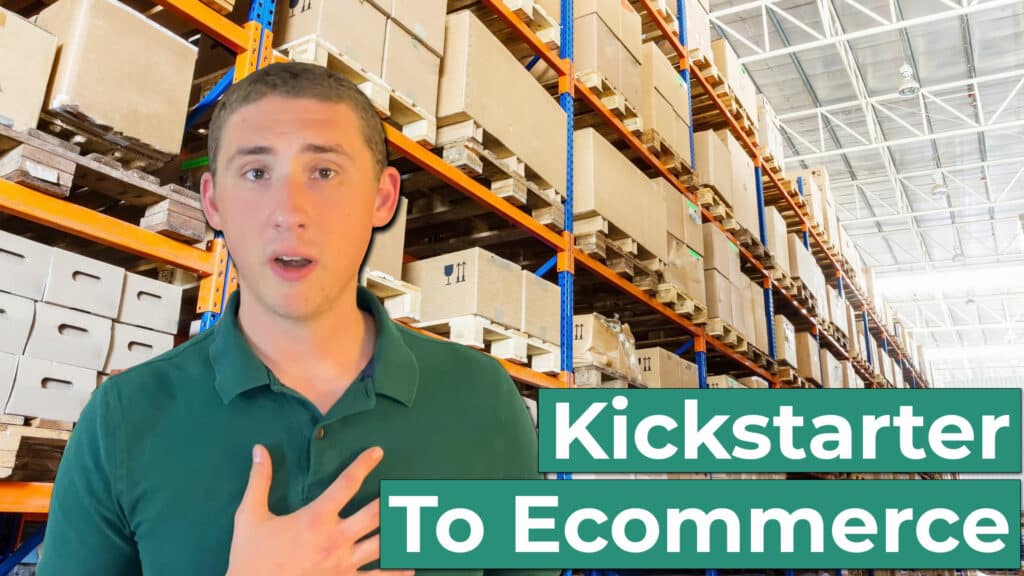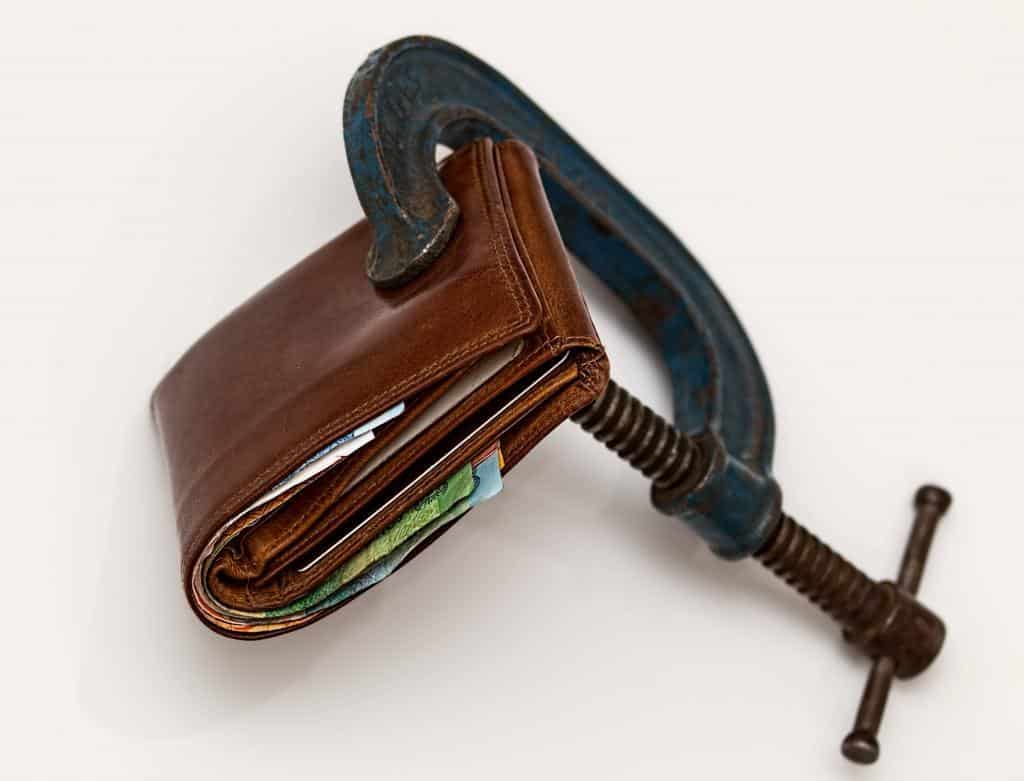If you want a bunch of attention all at once, launch a Kickstarter.
Sure, people don’t just show up at random. You have to make a great product and do a lot of marketing before you launch. But Kickstarter, Indiegogo, Gamefound, and all the others, make it much, much easier to get discovered. And, as a result, make a ton of money.
But, of course, campaigns end. Cards get charged. You start manufacturing. Ultimately, products get shipped out.
And then what? Is that it?
No! Kickstarter is a great way to build a long-term business. But if you want to do that, you need to plan your transition to a more long-term business model early on.
In this video, we’ll share some tips on how you can successfully transition from a crowdfunding campaign to a thriving eCommerce business.
My name is Brandon, here on behalf of Fulfillrite. If you need help shipping your orders, go to fulfillrite.com and request a quote. We’ve shipped thousands of Kickstarters and we’re happy to help you ship yours. The quote doesn’t cost a thing, so if nothing else, you get some good information about pricing. Link in the description.
But enough self-promotion, let’s talk about making the jump from Kickstarter to eCommerce!
There are four big steps to this process, and I’ll break these down over the course of the video. They are:
- Ship your campaign successfully.
- Build your store.
- Build your marketing infrastructure, and
- Choose the right time to transition to eCommerce.
So with that in mind, let’s talk about how you can…
1. Ship your campaign successfully.
If you want to go from having a successfully funded Kickstarter campaign to the world of eCommerce, there’s one thing you absolutely have to do first.
Ship your existing campaign’s rewards!
In the nearly 15 years of Kickstarter, it’s become a cultural norm for backers to receive their rewards before anyone else has a chance to buy them elsewhere. And it makes perfect sense! After all, they essentially preordered and were the very first to have faith in your ideas.
Fail to ship these rewards, and your odds of establishing a positive reputation in the long run go down by quite a bit. Your backers could be your most loyal, diehard, lifetime fans. But only if you keep them happy.
To that end, you will need to make sure that your product matches the quality and specifications promised in your campaign. Anything less, and your eCommerce store sales will be hobbled from day one. So make sure the final product does justice to the prototype shown during the campaign!
Another thing to consider is that you will inevitably learn things as your start manufacturing. You may need to make a few tweaks here and there, and you’ll want to keep an open line of communication with your manufacturers. That way, you can fix issues as they arise and also make sure that Product 2.0 is better than the first batch!
All the while, you’ll need to keep your backers in the loop. You’ll want to publish regular updates and keep people informed about shipping times and delays.
As backers start receiving the product, actively seek feedback. Their insights will be invaluable for refining the product, addressing any teething issues, and improving your future batches. You might even be able to implement some of their changes before you launch your eCommerce store.
But, of course, if you want to get into eCommerce, you will need to…
2. Build your store.
Fulfilling a Kickstarter is a lot of work, but there’s also a lot of downtime. Your manufacturer will probably need a substantial amount of time to produce the items. Your freight shipper – especially if they ship by sea from somewhere far away like China – will probably need weeks too.
This gives you a great chance to start building your brand’s primary home online. During this time, you’ll want to choose the right eCommerce platform. There are a ton of good options, like Shopify, WooCommerce, and Squarespace. These all have pros and cons, and you’ll need to think about factors like ease of use, integration options, and scalability.
When in doubt, go with Shopify. It’s relatively inexpensive and easy to use and there is a big community of people who can help you if something goes wrong when you’re building or running your store.
If you haven’t given much thought to branding yet, it’s a good time to do that. You’ll want a consistent look and feel on your site and across products. This isn’t just about color schemes and logos, though those are important. You’ll want to think about the kind of feeling you want people to associate with your brand and make sure everything from packaging to fonts reinforces that idea.
Also important is to make sure your site, overall, looks professional. Invest in high quality images that show off your product. Make your product descriptions nice and detailed. Make sure the site is fast, works well on mobile devices, and is generally pleasant to use.
Your online store should be an extension of your brand. Maintain a consistent look and feel. This doesn’t just relate to color schemes and logos; it’s also about the user experience, site speed, and mobile responsiveness. Bonus points if you are able to add video demonstrations of your product.
Shipping is a pretty contentious point for a lot of small eCommerce shops, so save yourself some trouble here and really get the details right. You want to make sure people have a very clear idea of how long shipping will take and how much it will cost before they even add the item to their carts!
When it comes to returns, make sure you have a clear, fair, highly visible exchange policy. The easier it is to exchange items, the more likely people are to make a purchase.
Last but definitely not least, ensure customers can reach you easily. Whether it’s through chatbots, email, or phone, swift and helpful customer service can really make people feel like you care. And that leads to customer retention, which is where the real money is made.
All that said, you’ve got to get people to your store in the first place. And to do that, you’ll need to…
3. Build your marketing infrastructure.
As it turns out, you don’t just have to launch a Kickstarter, wait a few months, and then try to get a new round of people on your store. You can keep sales going well after the campaign through a pledge manager like BackerKit or CrowdOx.
So for starters, if you plan to transition to eCommerce, plan to use a pledge manager too. These tools will make it easier to do a lot of things, which include collecting mailing addresses, upselling and cross-selling, and – most importantly – sending out detailed surveys, during which you can very easily ask for email addresses.
Email addresses are really important. A large, well-engaged email list is one of the best ways to make sales on an ongoing basis. So make sure you put a lot of time into thoughtful email marketing. Think about how you can give people reasons to subscribe and stay subscribed.
On the more technical side, while you’re building your eCommerce store – but before you launch it – make sure you have analytics set up on it too. Google Analytics will do the trick and it’s free. The main thing you want to do is be able to how people are finding your site and what is causing them to purchase (or fail to make a purchase).
Once you have your basic email and analytics infrastructure set up, you might want to do some advertising too.
Don’t jump headfirst into expensive ad campaigns. Test first. Use platforms like Facebook or Google Ads to run small campaigns. Monitor performance. This helps you identify which messages and visuals resonate best with your audience.
If you’re looking for more organic reach, consider influencer marketing. This can provide a massive boost, especially for new brands. Identify influencers in your niche and prepare to send them samples. Their reviews or mentions can lead to a significant influx of curious customers.
Remember – sending out product samples to reviewers is the oldest form of influencer marketing out there, and it works in very nearly any industry.
Lastly, depending on your product, social media could be invaluable. Platforms like Instagram or Pinterest can be especially powerful for visually appealing products.
So if you have a product that lends itself well to social media marketing, make an effort to post consistently, engage with followers, and use it as a platform to showcase your products in real-life situations.
At this point, once you ship rewards, set up your store, and build your marketing infrastructure, there’s only one thing left to do…
4. Choose the right time to transition to eCommerce.
Timing is everything. Don’t launch your store before you fulfill your existing campaign obligations. But don’t wait too much longer, or you could lose your momentum.
Start with a soft launch. That is, launch your store but do it quietly, without much fanfare. This phase helps identify any glitches or issues before a bigger audience sees them. Listen to what your initial customers have to say so you can refine and improve.
Then once you follow through on that, then go big. Announce your official launch. Support it with well-planned ads, email campaigns, and other promotional activities. Treat it like another Kickstarter launch!
And there you have it! By following these four steps, you can do like many entrepreneurs before you, and seamlessly move from Kickstarter to eCommerce and beyond. Your campaign doesn’t have to be a flash in the pan. With a little bit of foresight, you can use the huge rush of attention that comes with launching a Kickstarter to build a lasting business for the ages.
My name is Brandon, here on behalf of Fulfillrite. If you need help shipping your orders, go to fulfillrite.com and request a quote. We’ve shipped thousands of Kickstarters and we’re happy to help you ship yours. The quote doesn’t cost a thing, so if nothing else, you get some good information about pricing. Link in the description.
If you enjoyed this video, please take a moment to like and subscribe. Don’t forget to slap some postage on that bell so we can express ship new videos to you as soon as they drop. And last but not least, if you have any questions, leave a comment below. I will personally answer as many as I can.
Thanks for watching!





